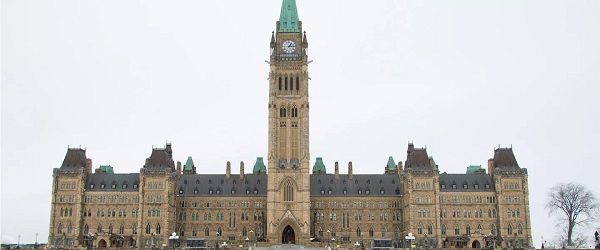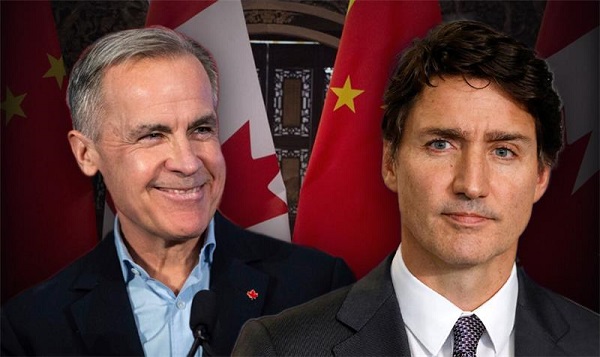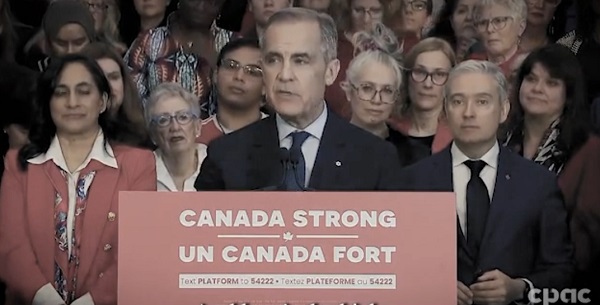Business
Discovery Centre rolls into Capstone

The City of Red Deer, Land & Economic Development team publicly launched a real estate presentation centre for the Capstone community redevelopment program. The presentation centre has been designed specifically to educate and engage Red Deerians and Central Albertans on the vision of the community and its importance to the vitality and sustainability of downtown Red Deer. The opening marks a new era in the transformation of the area into a master planned urban village in the heart of downtown Red Deer.
While traditional ‘bricks and mortar’ real estate centres are still common practice in community development, The City of Red Deer took a more innovative approach to sharing the vision of the Capstone redevelopment, by converting a decommissioned transit bus into a discovery centre.
Named the Capstone Discovery Bus, the mobile real estate centre allows The City a unique opportunity to travel throughout Red Deer and into smaller areas to broaden interest for and educate on the community vision. Civic celebrations, annual festivals and cultural performances will be regular stops when the bus is not at its main stop near Canada 150 Square inside Capstone.
“Having a community presentation centre that engages and educates the public is a vital part of real estate development as it supports storytelling, which ultimately affects a buying decision,” said Mayor Ken Johnston. “It gives future residents and real estate prospects a sampling of how the community will look, feel, and behave. Importantly, it addresses how the community will meet the needs of its residents.”
Capstone is quite unique in its design and development intentions and represents a new type of community for Red Deer. The vision for Capstone is a mixed use, multi-family community in which 5,000 residents will one day live in some 2,000 condominiums, apartments, and townhomes. Its’ location on the Red Deer River, west of the downtown, means Capstone is both a prime riverside address and an accessible city home.
“The success of the Capstone redevelopment program underpins the future health and vitality of our downtown core,” City Manager, Tara Lodewyk. ‘Our city is expected to grow by approximately 20,000 new residents over the next 10-12 years and accommodating some of this population growth in Capstone is good news for our downtown businesses and services. We have planned for the highest and best use of the lands in Capstone to accommodate for our growth.”

City Manager Tara Lodewyk joins Mayor Johnston and Councillors Buruma, Dawe, and Lee at Capstone Discovery Bus Ribbon Cutting Ceremony
The interior spaces and displays of the remodeled city bus have been meticulously designed to portray the Capstone vision. Within its tiny 280 square foot footprint, the Capstone Discover Bus allows visitors to experience a typical day-in-the-community. An urban condo, a brew pub, a micro grocery store, and a mini park space all come together to describe the personality and built form of the neighbourhood. A 3-D model, depicting the community at full build-out, will be delivered digitally and will orient the visitor to the lands of Capstone, while highlighting the future density ambitions and design aesthetic.
Extensive research was done on the wants and needs of the future resident, and young working professionals and older adults have identified as most interested in calling Capstone home. With nearby retail services and amenities, including an expanded regional hospital, the future Capstone citizen is seeking a community which not only satisfies their social and recreational needs but also offers beautifully appointed and designed homes.
The Capstone Discovery Bus is free of charge to the public and is open 12 – 6 p.m. Thursday through Sunday and on holiday Mondays. No reservation is needed; the public is invited to find us in Capstone and throughout the downtown core this summer. Follow us at #liveincapstone.
2025 Federal Election
POLL: Canadians want spending cuts

 By Gage Haubrich
By Gage Haubrich
The Canadian Taxpayers Federation released Leger polling showing Canadians want the federal government to cut spending and shrink the size and cost of the bureaucracy.
“The poll shows most Canadians want the federal government to cut spending,” said Gage Haubrich, CTF Prairie Director. “Canadians know they pay too much tax because the government wastes too much money.”
Between 2019 and 2024, federal government spending increased 26 per cent even after accounting for inflation. Leger asked Canadians what they think should happen to federal government spending in the next five years. Results of the poll show:
- 43 per cent say reduce spending
- 20 per cent say increase spending
- 16 per cent say maintain spending
- 20 per cent don’t know
The federal government added 108,000 bureaucrats and increased the cost of the bureaucracy 73 per cent since 2016. Leger asked Canadians what they think should happen to the size and cost of the federal bureaucracy. Results of the poll show:
- 53 per cent say reduce
- 24 per cent say maintain
- 4 per cent say increase
- 19 per cent don’t know
Liberal Leader Mark Carney promised to “balance the operating budget in three years.” Leger asked Canadians if they believed Carney’s promise to balance the budget. Results of the poll show:
- 58 per cent are skeptical
- 32 per cent are confident
- 10 per cent don’t know
“Any politician that wants to fix the budget and cut taxes will need to shrink the size and cost of Ottawa’s bloated bureaucracy,” Haubrich said. “The polls show Canadians want to put the federal government on a diet and they won’t trust promises about balancing the budget unless politicians present credible plans.”
2025 Federal Election
Carney’s budget means more debt than Trudeau’s

The Canadian Taxpayers Federation is criticizing Liberal Party Leader Mark Carney’s budget plan for adding another $225 billion to the debt.
“Carney plans to borrow even more money than the Trudeau government planned to borrow,” said Franco Terrazzano, CTF Federal Director. “Carney claims he’s not like Trudeau and when it comes to the debt, here’s the truth: Carney’s plan is billions of dollars worse than Trudeau’s plan.”
Today, Carney released the Liberal Party’s “fiscal and costing plan.” Carney’s plan projects the debt to increase consistently.
Here is the breakdown of Carney’s annual budget deficits:
- 2025-26: $62 billion
- 2026-27: $60 billion
- 2027-28: $55 billion
- 2028-29: $48 billion
Over the next four years, Carney plans to add an extra $225 billion to the debt. For comparison, the Trudeau government planned on increasing the debt by $131 billion over those years, according to the most recent Fall Economic Statement.
Carney’s additional debt means he will waste an extra $5.6 billion on debt interest charges over the next four years. Debt interest charges already cost taxpayers $54 billion every year – more than $1 billion every week.
“Carney’s debt binge means he will waste $1 billion more every year on debt interest charges,” Terrazzano said. “Carney’s plan isn’t credible and it’s even more irresponsible than the Trudeau plan.
“After years of runaway spending Canadians need a government that will cut spending and stop wasting so much money on debt interest charges.”
-

 Alberta2 days ago
Alberta2 days agoProvince to expand services provided by Alberta Sheriffs: New policing option for municipalities
-

 2025 Federal Election2 days ago
2025 Federal Election2 days agoCSIS Warned Beijing Would Brand Conservatives as Trumpian. Now Carney’s Campaign Is Doing It.
-

 Bruce Dowbiggin2 days ago
Bruce Dowbiggin2 days agoIs HNIC Ready For The Winnipeg Jets To Be Canada’s Heroes?
-

 2025 Federal Election2 days ago
2025 Federal Election2 days agoNo Matter The Winner – My Canada Is Gone
-

 Alberta2 days ago
Alberta2 days agoMade in Alberta! Province makes it easier to support local products with Buy Local program
-

 Health2 days ago
Health2 days agoHorrific and Deadly Effects of Antidepressants
-

 2025 Federal Election2 days ago
2025 Federal Election2 days agoCampaign 2025 : The Liberal Costed Platform – Taxpayer Funded Fiction
-

 2025 Federal Election2 days ago
2025 Federal Election2 days agoA Perfect Storm of Corruption, Foreign Interference, and National Security Failures


